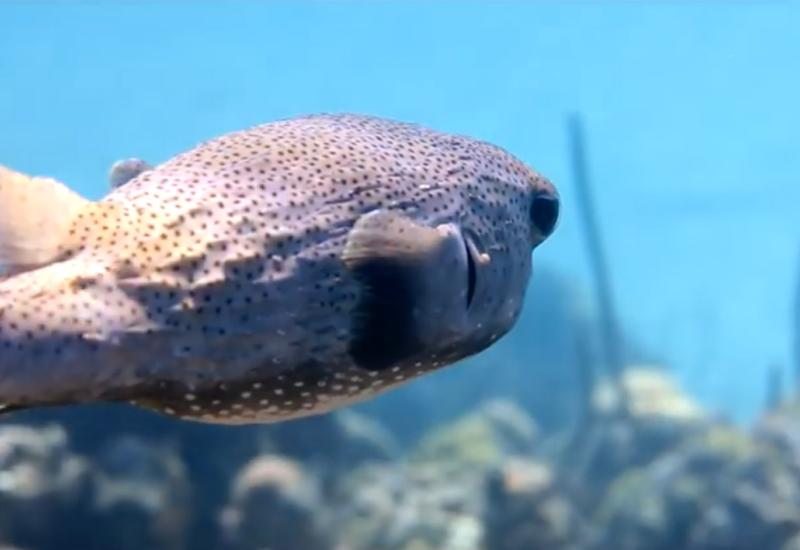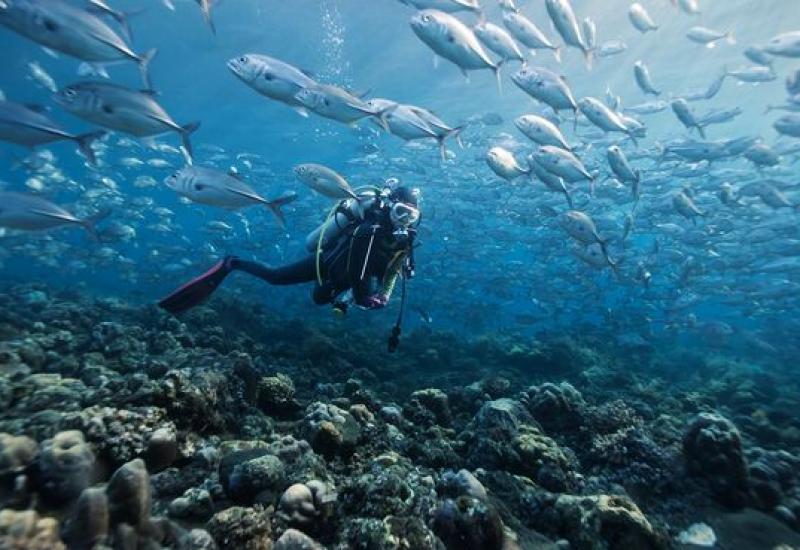How to Perfectly Capture Sunlight in Underwater Images
Shafts of sunlight spearing down through the water — nothing adds as much atmosphere to a photo. But shooting sunbursts is tough. Get it wrong and you’ll discover why photographers call it the “white ball of death,” as it will overpower an otherwise attractive picture. A sumptuous sunburst, with a well-controlled sun ball and attractive rays, comes from reading the conditions and shooting with discipline.

Alex MustardSheltered water, like in a cenote, is ideal for sharply defined rays.
Assess the Conditions
Capturing striking sunbeams in pictures isn’t possible all the time. Obviously, the sun needs to be out, but a smooth water surface is just as important. When it is windy, the water surface becomes ruffled, which disrupts your view of the sun and stops beams from being focused into attractive rays. This is one reason why cenotes are so well suited to these shots — the sheltered water is ideal for sharply defined rays. On those rare days that you get the same conditions in the ocean, try to incorporate the sun in every frame.

Alex MustardThe submerged walls of Raja Ampat have perfect conditions for capturing ample sunlight.
Seek the Calm
Many tropical dive destinations are exposed to easterly trade winds, so dive sites on the protected western sides of islands, rocks or even a large liveaboard provide the smoothest water. Furthermore, each day the land heats up more quickly than the ocean, creating a sea breeze from midmorning to late afternoon. This often makes the first dive of the day best for sunbursts. You can find smooth water where coral grows right to the surface and where marine life clings to submerged walls of steep-sided islands, such as the rock islands of Indonesia’s Raja Ampat.

Aaron WongShallow locales allow for more light penetration.
Stay Shallow
Depth is the other big factor that affects a sunburst, and the trick is to stay shallow. First, sun rays become less defined with depth because as they pass through water their light is scattered in all directions, making them weaker and weaker. Second, as we go deeper, the sun begins to get a garish turquoise halo around it. When the sun is high in the sky — for example, at midday in the tropics — then the beams penetrate best and you can shoot the sun from deeper. I try to stay as shallow as possible, knowing I’ll always capture the most attractive sunburst in shallow water.
MORE UNDERWATER PHOTOGRAPHY TIPS:
Perfecting Lens Techniques
Creating Movement in Your Images
Capturing A Subject's Eye










